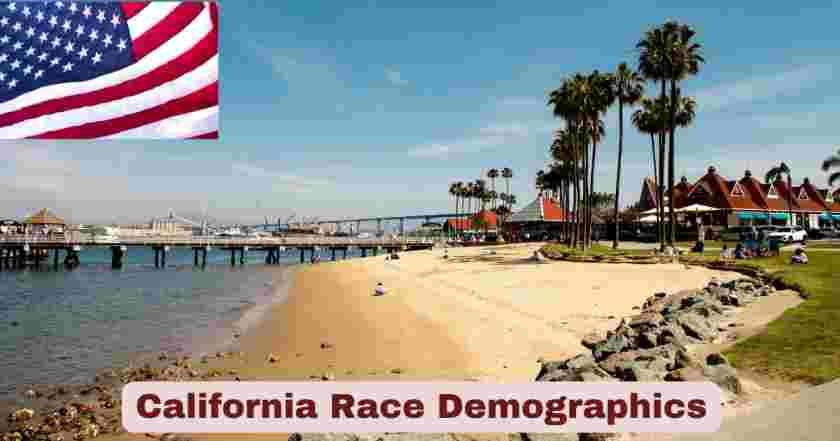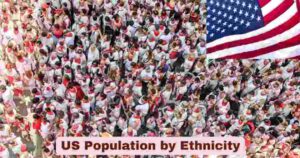Race Demographics in California 2025
California stands as the most populous state in America and serves as a living laboratory for understanding how diverse populations can coexist, collaborate, and build shared futures together. With over 39.2 million residents calling the Golden State home, California has achieved a remarkable demographic milestone that sets it apart from virtually every other region in the United States. No single racial or ethnic group commands a majority here, creating what demographers call a “majority-minority” state where diversity itself has become the defining characteristic. This transformation didn’t happen overnight but represents the culmination of decades of immigration from Latin America, Asia, and other parts of the world, combined with natural population shifts and changing patterns of how people identify racially and ethnically. Understanding California race demographics in 2025 matters not just for policymakers and researchers, but for anyone seeking to comprehend the future of American society, as demographic trends that emerge first in California often spread to other parts of the country within a generation.
The racial and ethnic composition of California reflects waves of human migration spanning centuries, from Indigenous peoples who inhabited these lands for millennia, to Spanish colonizers, Mexican settlers, Gold Rush immigrants, Asian laborers who built the transcontinental railroad, African Americans who migrated west seeking opportunity, and more recent arrivals from every corner of the globe. Today’s California race demographics in 2025 tell a story of remarkable diversity where Hispanic or Latino residents have surpassed all other groups to become the largest ethnic population, while white, Asian, African American, Native American, Pacific Islander, and multiracial communities each contribute distinct cultural traditions, economic perspectives, and social values. This demographic reality shapes everything from the food Californians eat and the languages spoken in schools, to the candidates who win elections and the businesses that thrive in this competitive marketplace. Educational institutions grapple with serving student bodies that speak dozens of languages at home, healthcare providers work to address health disparities affecting different racial groups, and employers navigate workplaces where cultural competency has shifted from optional to essential.
Interesting Stats & Facts About California Race Demographics in 2025
| Demographic Fact | Specific Details |
|---|---|
| California is a Majority-Minority State | No single racial or ethnic group comprises more than 50% of the population, making it one of America’s most diverse states |
| Largest Racial Group | White residents total 17.25 million people, representing 43.95% of the state’s population |
| Hispanic/Latino Population Dominance | Hispanic or Latino residents number 15.63 million, comprising 39.83% of California’s total population |
| Asian American Concentration | Asian residents total nearly 6 million people at 5.997 million, accounting for 15.28% of the state population |
| Multiracial Population Growth | Multiracial individuals now represent 16.33% of California with 6.41 million residents |
| African American Community | Black or African American residents number 2.17 million, comprising 5.54% of the total population |
| Mexican Heritage Predominance | Among Hispanic residents, 80.98% trace ancestry to Mexico, totaling 12.66 million people |
| Native American Population | American Indian and Alaska Native residents number 445,219, representing 1.13% of the state |
| Non-Hispanic White Population | Non-Hispanic white residents total 13.57 million, representing 34.59% of California’s population |
| Pacific Islander Communities | Native Hawaiian and Pacific Islander populations comprise 147,827 residents at 0.38% of the state |
Data Source: U.S. Census Bureau American Community Survey (ACS) 2019-2023 5-Year Estimates
Understanding the Numbers Behind California’s Diversity in 2025
California’s transformation into a state where no racial group holds a majority represents one of the most significant demographic shifts in American history. The white population at 43.95% remains the largest single racial category but has declined from historical dominance throughout the 20th century when white residents comprised over 80% of California’s population. This decline doesn’t indicate that white Californians are leaving in droves, but rather reflects slower growth rates compared to other groups combined with the explosive growth of Hispanic, Asian, and multiracial populations. The Hispanic or Latino population at 39.83% has grown steadily for decades, driven by both immigration from Latin American countries and higher birth rates compared to other demographic groups. The dominance of Mexican-origin residents at 80.98% of all Hispanics reflects California’s geographic location sharing a border with Mexico, historical ties dating back to when California was part of Mexico, and established migration networks that make California the destination of choice for Mexican immigrants.
The Asian American population at 15.28% represents remarkable diversity within a single census category, encompassing Chinese, Filipino, Indian, Vietnamese, Korean, Japanese, and dozens of other distinct national origin groups with unique languages, cultures, and migration histories. The multiracial population surge to 16.33% signals changing attitudes about racial identity, with younger Californians increasingly comfortable identifying with multiple racial backgrounds and census forms now allowing people to check multiple race boxes. The African American population at 5.54% remains influential in politics, culture, and civil rights advocacy despite representing a smaller proportion compared to national African American demographics. The Native American population of 445,219 includes members of California’s over 100 federally recognized tribes plus urban Native Americans from tribes nationwide. These numbers collectively demonstrate that California’s future will be shaped by increasingly complex racial dynamics, requiring new approaches to governance, education, economic development, and social integration that move beyond traditional black-white racial paradigms that defined much of 20th century American discourse about race.
Hispanic and Latino Population in California 2025
| Hispanic/Latino Origin | Population | Percentage of Total California Population | Percentage of Hispanic Population |
|---|---|---|---|
| Total Hispanic or Latino Population | 15,630,830 | 39.83% | 100% |
| Mexican Origin | 12,657,515 | 32.26% | 80.98% |
| Puerto Rican Origin | 224,544 | 0.57% | 1.44% |
| Cuban Origin | 99,986 | 0.25% | 0.64% |
| Other Hispanic or Latino Origins | 2,648,785 | 6.75% | 16.95% |
Data Source: U.S. Census Bureau American Community Survey (ACS) 2019-2023 5-Year Estimates
The Hispanic and Latino population in California 2025 has grown to become the state’s largest ethnic group with 15.63 million residents representing 39.83% of the total population, marking a historic shift in California’s demographic composition. This population growth reflects multiple factors including sustained immigration from Latin America, higher fertility rates compared to non-Hispanic populations, and younger age profiles that contribute to natural population increase through births. The overwhelming predominance of Mexican-origin residents at 12.66 million people comprising 80.98% of all Hispanic Californians demonstrates the profound influence of Mexican culture, language, and traditions on California’s identity. This demographic reality manifests in everyday life through Spanish-language media dominating radio and television, Mexican restaurants on nearly every street corner, celebrations of Cinco de Mayo and Día de los Muertos, and the integration of Spanish language into California business and education. The smaller but significant populations of Puerto Rican origin at 224,544 and Cuban origin at 99,986 add Caribbean Hispanic perspectives, while the 2.65 million residents of other Hispanic origins include substantial populations from El Salvador, Guatemala, Nicaragua, and other Central and South American nations.
The demographic weight of California’s Hispanic population in 2025 translates into significant political, economic, and cultural power that reshapes state priorities and policies. Hispanic voters now comprise over one-third of California’s electorate, making them the decisive voting bloc in many elections and pushing issues like immigration reform, bilingual education, affordable housing, and workers’ rights to the forefront of political debate. Economically, Hispanic-owned businesses generate hundreds of billions in revenue annually, with entrepreneurship rates among Hispanic Californians exceeding other demographic groups in sectors ranging from construction and food services to professional services and technology. The median age of Hispanic Californians at approximately 30 years compared to 45 years for non-Hispanic whites means this population will drive California’s future labor force, consumer markets, and political landscape for decades to come. Educational institutions serve a majority-Hispanic student body in California’s public schools, requiring culturally responsive teaching methods, bilingual programs, and curricula that reflect Latino historical contributions and cultural perspectives. Healthcare systems must address specific challenges facing Hispanic communities including higher rates of diabetes and obesity, language barriers to accessing care, and lower rates of health insurance coverage, particularly among recent immigrants and undocumented populations.
White Population Demographics in California 2025
| White Population Category | Population | Percentage of Total California Population | Key Demographic Characteristics |
|---|---|---|---|
| Total White Population (All) | 17,248,779 | 43.95% | Includes Hispanic and Non-Hispanic white residents |
| Non-Hispanic White Alone | 13,573,226 | 34.59% | Excludes Hispanic white identification |
| Hispanic White | 3,675,553 | 9.36% | Hispanic individuals identifying as racially white |
Data Source: U.S. Census Bureau American Community Survey (ACS) 2019-2023 5-Year Estimates
The white population in California 2025 totals 17.25 million residents representing 43.95% of the state’s population, maintaining its position as the largest single racial category despite no longer constituting a numerical majority. This demographic reality marks a profound transformation from California’s past when white residents comprised over 80% of the state population throughout most of the 20th century, wielding near-total control over political institutions, economic resources, and cultural narratives. The distinction between total white population and non-Hispanic white residents at 13.57 million or 34.59% proves crucial for understanding California’s racial dynamics, as the Census Bureau’s methodology counts Hispanic individuals who select “white” as their race separately in ethnic statistics. The non-Hispanic white population more accurately represents populations of primarily European descent who historically dominated California’s power structures, though this group now faces the demographic reality of becoming a minority population expected to fall below 30% of California’s total by 2030.
The shifting demographics of California’s white population in 2025 carry profound implications for political representation, economic opportunity, and social cohesion across the state. Non-Hispanic white Californians still maintain disproportionate influence in corporate boardrooms, property ownership, wealth accumulation, and certain political offices, though this influence erodes as demographic changes reshape electoral maps and power structures. Geographic distribution shows white residents concentrated in coastal communities, suburban enclaves, and rural northern regions, while urban cores and inland valleys display greater racial diversity. The median age of non-Hispanic white Californians at approximately 45 years compared to much younger Hispanic and Asian populations suggests this group will decline both numerically and as a proportion of population in coming decades through lower birth rates and higher mortality rates associated with older age profiles. Economically, white households maintain higher median incomes averaging around $95,000 annually and homeownership rates exceeding 62%, reflecting accumulated intergenerational wealth and historical advantages in accessing property ownership, education, and employment opportunities. Political attitudes within white California span the full spectrum from progressive urban coastal voters supporting diversity initiatives and immigrant rights to conservative rural voters concerned about cultural change and economic competition, making “white voters” too diverse a category to predict uniform political behavior.
Asian American Population Demographics in California 2025
| Asian American Population | Population | Percentage of Total California Population | Major National Origin Groups |
|---|---|---|---|
| Total Asian Population | 5,997,069 | 15.28% | All Asian ancestries combined |
| Non-Hispanic Asian Alone | 5,906,995 | 15.05% | Excluding multiracial combinations |
| Chinese American | ~1,800,000 | ~4.59% | Largest Asian subgroup statewide |
| Filipino American | ~1,600,000 | ~4.08% | Second largest Asian community |
| Indian American | ~900,000 | ~2.29% | Fastest growing Asian population |
| Vietnamese American | ~800,000 | ~2.04% | Significant refugee-origin community |
| Korean American | ~500,000 | ~1.27% | Concentrated in urban regions |
| Japanese American | ~400,000 | ~1.02% | Historic California population |
Data Source: U.S. Census Bureau American Community Survey (ACS) 2019-2023 5-Year Estimates
The Asian American population in California 2025 has grown to nearly 6 million residents representing 15.28% of the state’s total population, cementing California’s position as home to the largest Asian American population of any state in the nation. This demographic encompasses extraordinary diversity, with the term “Asian American” grouping together dozens of distinct ethnicities, languages, religions, migration histories, and cultural traditions that span an entire continent. Chinese Americans at approximately 1.8 million remain the largest Asian subgroup, reflecting immigration waves dating back to the Gold Rush era in the 1850s, exclusion and discrimination during the Chinese Exclusion Act period, and more recent arrivals including students, skilled workers, and investors. Filipino Americans number roughly 1.6 million, representing over a century of migration tied to American colonial rule of the Philippines, military service, and healthcare worker recruitment. Indian Americans approach 900,000 and comprise the fastest-growing Asian community driven by high-skilled immigration in technology, medicine, engineering, and academic sectors, with median household incomes often exceeding $120,000.
The economic and social impact of California’s Asian American population in 2025 extends far beyond demographic numbers, profoundly shaping the state’s innovation economy, educational systems, and cultural landscape. Asian Americans represent a substantial portion of Silicon Valley’s technology workforce, startup founders, and venture capital investors, driving California’s dominance in global technology markets. Educational achievement metrics show Asian American students consistently outperforming other racial groups in standardized testing, college enrollment, and degree completion, though these aggregate statistics mask significant disparities between East Asian, South Asian, and Southeast Asian communities. Vietnamese Americans at roughly 800,000 and Cambodian, Laotian, and Hmong populations face higher poverty rates and educational challenges compared to Chinese and Indian Americans, demonstrating the danger of treating Asian Americans as a monolithic “model minority.” The median household income for Asian American families at approximately $108,000 exceeds all other racial groups, yet this figure obscures the reality that Southeast Asian households often earn 40-50% less than this average. Cultural contributions from Asian American communities permeate California life through cuisine ranging from Korean barbecue to Indian curry, religious institutions including Buddhist temples and Hindu mandirs, language schools teaching Mandarin and Tagalog, and festivals celebrating Lunar New Year, Diwali, and other cultural traditions.
African American Population Demographics in California 2025
| Black/African American Category | Population | Percentage of Total California Population | Key Community Characteristics |
|---|---|---|---|
| Total Black or African American | 2,173,343 | 5.54% | All Black/African American residents |
| Non-Hispanic Black Alone | 2,076,395 | 5.29% | Excluding Hispanic Black populations |
| Hispanic Black | 96,948 | 0.25% | Afro-Latino populations |
| Black Population (Including Multiracial) | ~2,800,000 | ~7.14% | Including multiracial Black identification |
Data Source: U.S. Census Bureau American Community Survey (ACS) 2019-2023 5-Year Estimates
The African American population in California 2025 comprises 2.17 million residents representing 5.54% of the state’s total population, a proportionally smaller percentage compared to the national Black population of roughly 13% but still constituting a politically, culturally, and economically significant community. California’s Black population reflects diverse origins including descendants of the Great Migration when hundreds of thousands of African Americans fled Southern racial violence and economic oppression for opportunities in California’s defense industries, agriculture, and urban centers during the 1940s-1960s. More recent African immigrants from Nigeria, Ethiopia, Ghana, and other African nations add continental African perspectives and experiences distinct from African Americans with multigenerational roots in the United States. Afro-Caribbean populations contribute additional diversity, while the 96,948 Hispanic Black residents represent the intersection of African and Latino identities. When accounting for multiracial individuals who identify as partially Black, the total African American population expands to approximately 2.8 million or 7.14%, reflecting increasing interracial relationships and more nuanced racial identification among younger generations.
The socioeconomic reality for California’s African American population in 2025 presents a complex picture combining significant achievements with persistent racial disparities and systemic challenges. Black Californians maintain strong political influence particularly in urban areas, with Black elected officials serving as mayors, legislators, judges, and members of Congress who champion criminal justice reform, educational equity, and economic opportunity. Culturally, African American communities have profoundly shaped California’s music scene, culinary traditions, religious landscape, and artistic expression, from West Coast hip-hop in Los Angeles to the Black Panther Party’s origins in Oakland. However, the median household income for Black Californians at approximately $62,000 lags substantially behind white and Asian households at $95,000 and $108,000 respectively, while the poverty rate of 19.2% exceeds the state average of 12.6%. The Black homeownership rate of just 37.4% compared to 62.8% for whites reflects the devastating legacy of redlining, discriminatory lending, restrictive covenants, and other racist policies that prevented wealth accumulation through property ownership. Educational disparities persist with Black students experiencing lower high school graduation rates, reduced college enrollment, and disciplinary actions at disproportionate rates, though progress has occurred through culturally responsive teaching and increased resources. Healthcare inequities affect Black Californians through higher rates of hypertension, diabetes, maternal mortality, and reduced life expectancy compared to other racial groups, necessitating targeted public health interventions addressing both medical care and social determinants of health.
Multiracial Population Demographics in California 2025
| Multiracial Population Category | Population | Percentage of Total California Population | Demographic Trends |
|---|---|---|---|
| Total Multiracial Population | 6,410,245 | 16.33% | Individuals identifying with two or more races |
| Non-Hispanic Multiracial | 1,605,204 | 4.09% | Excluding Hispanic multiracial individuals |
| Hispanic Multiracial | 4,805,041 | 12.24% | Hispanic individuals with multiple racial identities |
| Common Combinations | Varies | N/A | White-Asian, White-Hispanic, Black-White, Asian-Pacific Islander most common |
Data Source: U.S. Census Bureau American Community Survey (ACS) 2019-2023 5-Year Estimates
The multiracial population in California 2025 has surged to 6.41 million residents representing 16.33% of the total state population, making it one of the fastest-growing demographic categories and challenging traditional notions of fixed, singular racial identity. This remarkable growth reflects multiple converging trends including dramatically increasing rates of interracial marriage that have risen from less than 5% of marriages in 1970 to over 20% today, changing social attitudes that reduce stigma around racial mixing, census methodology changes in 2000 that first allowed people to check multiple race boxes, and younger generations who embrace more fluid, complex racial identities. The distinction between non-Hispanic multiracial individuals at 1.6 million and Hispanic multiracial individuals at 4.8 million reveals how many Latino Californians identify with multiple racial backgrounds reflecting Indigenous, European, and African ancestries that comprise Latin American populations. Common multiracial combinations include White-Asian families particularly prevalent in suburban communities with well-educated professional parents, White-Hispanic families representing cultural and linguistic integration across generations, Black-White individuals navigating complex racial dynamics and historical tensions, and various Asian-Pacific Islander combinations reflecting intra-Asian diversity and marriage patterns.
The emergence of a massive multiracial population in California 2025 carries profound implications for how Californians think about race, identity, community, and belonging in an increasingly diverse society. Multiracial individuals often report navigating complex questions about cultural identity, feeling pressure to “choose sides” between different racial communities, experiencing both privilege and discrimination depending on how they are perceived, and lacking clear cultural touchstones or community institutions specifically serving multiracial populations. This demographic segment trends significantly younger than single-race populations, with multiracial children representing nearly 25% of births in recent years, suggesting California’s future will be dominated by individuals who embody multiple racial heritages. The age profile skewing young means multiracial Californians will increasingly shape consumer markets, electoral politics, workplace dynamics, and cultural production as they move into positions of influence and power. Educational institutions grapple with how to serve students with complex racial identities, including curriculum development that reflects multiracial experiences, disciplinary policies that account for how multiracial students are perceived, and data collection that allows meaningful disaggregation. The growth of California’s multiracial population suggests traditional notions of bounded, distinct racial categories may become obsolete, replaced by more fluid understandings recognizing that racial identity exists on a spectrum with complex intersections rather than falling into neat boxes that satisfied 20th-century census takers but poorly describe 21st-century lived experience.
Native American and Pacific Islander Populations in California 2025
| Indigenous Populations | Population | Percentage of Total California Population | Community Details |
|---|---|---|---|
| American Indian/Alaska Native Total | 445,219 | 1.13% | All Native American populations |
| Non-Hispanic Native American | 107,379 | 0.27% | Excluding Hispanic Native identification |
| Hispanic Native American | 337,840 | 0.86% | Latin American Indigenous heritage |
| Native Hawaiian/Pacific Islander | 147,827 | 0.38% | All Pacific Islander populations |
| Non-Hispanic Pacific Islander | 132,838 | 0.34% | Excluding Hispanic Pacific Islanders |
Data Source: U.S. Census Bureau American Community Survey (ACS) 2019-2023 5-Year Estimates
The American Indian and Alaska Native population in California 2025 totals 445,219 residents representing 1.13% of the state’s population, encompassing extraordinary diversity among Indigenous peoples including members of California’s over 100 federally recognized tribes with ancestral homelands throughout the state, plus urban Native Americans from tribes nationwide who migrated to California cities during the federal relocation programs of the 1950s-1960s. California tribes range from the Yurok in the far north to the Kumeyaay in the south, from coastal Chumash to desert Cahuilla peoples, each maintaining distinct languages, cultural practices, and relationships with ancestral lands. The distinction between non-Hispanic Native Americans at 107,379 and the total Native population reveals that many individuals of Latin American descent identify with Indigenous ancestry, reflecting that roughly 60% of people in Mexico and Central America have Indigenous heritage. California’s Native American communities face complex challenges including sovereignty disputes with federal and state governments, battles over land rights and sacred sites, threats to cultural preservation as Native language speakers age, economic development limitations on many reservations, persistent poverty affecting 22.4% of Native households, healthcare access barriers, and ongoing impacts of historical trauma from genocide, forced assimilation, family separation through boarding schools, and land theft.
The Native Hawaiian and Pacific Islander population in California 2025 comprises 147,827 residents representing 0.38% of the state population, making California home to one of the largest Pacific Islander communities outside Hawaii and U.S. Pacific territories. This population includes Native Hawaiians maintaining cultural connections to the Hawaiian Islands despite living thousands of miles from their homeland, Samoans who migrated seeking educational and economic opportunities unavailable in American Samoa, Tongans fleeing limited opportunities on their home islands, Chamorros from Guam and the Northern Mariana Islands with military connections driving migration, and smaller populations from Fiji, the Marshall Islands, and other Pacific nations. Pacific Islander communities concentrate in Southern California particularly Los Angeles, Orange, San Diego, and Riverside counties, plus the San Francisco Bay Area and Sacramento, where they maintain strong cultural institutions including churches, cultural centers, language schools, and performance groups preserving traditional dance and music. Both Native American and Pacific Islander populations experience significant health disparities including elevated rates of diabetes, obesity, cardiovascular disease, and certain cancers compared to other racial groups, while life expectancy lags behind state averages. Educational outcomes vary dramatically, with some Native American and Pacific Islander students achieving academic success while others face substantial barriers including cultural disconnection from mainstream educational institutions, poverty limiting educational resources, family obligations that compete with schoolwork, and discrimination affecting motivation and achievement.
Regional Race Demographics Distribution in California 2025
| California Region | Total Population | Largest Racial/Ethnic Groups | Diversity Characteristics |
|---|---|---|---|
| Los Angeles Metro Area | ~13,000,000 | Hispanic (48%), White (26%), Asian (16%), Black (7%) | Most diverse major metropolitan area |
| San Francisco Bay Area | ~8,000,000 | White (38%), Asian (30%), Hispanic (23%), Multiracial (6%) | Highest Asian American concentration |
| San Diego County | ~3,400,000 | Hispanic (36%), White (44%), Asian (12%), Black (5%) | Military diversity influence |
| Central Valley | ~4,500,000 | Hispanic (55%), White (30%), Asian (10%), Black (4%) | Agricultural workforce concentration |
| Inland Empire | ~4,800,000 | Hispanic (52%), White (28%), Black (8%), Asian (8%) | Fast-growing affordable region |
| Sacramento Region | ~2,500,000 | White (42%), Hispanic (25%), Asian (17%), Black (10%) | Government center diversity |
| Northern California | ~1,500,000 | White (72%), Hispanic (16%), Native American (6%), Asian (4%) | Rural character, lowest diversity |
Data Source: U.S. Census Bureau American Community Survey (ACS) 2019-2023 5-Year Estimates and Regional Analysis
The regional distribution of race demographics in California 2025 reveals dramatic geographic variations in racial and ethnic composition that reflect distinct historical settlement patterns, economic opportunities, housing costs, and quality-of-life factors drawing different populations to specific regions. The Los Angeles metropolitan area with approximately 13 million residents stands as California’s most populous and diverse region where Hispanic residents at 48% reflect both historical Mexican presence dating to when Los Angeles was founded as a Spanish colonial settlement and massive immigration waves throughout the 20th and 21st centuries. Los Angeles serves as the primary gateway for immigrants from Mexico, Central America, and Latin America, while substantial Asian communities in neighborhoods like Koreatown, Little Tokyo, Monterey Park, and Westminster demonstrate the region’s role as an entry point for Asian immigration. African American communities in South Los Angeles, Inglewood, and Compton maintain cultural influence despite gentrification pressures, while white residents increasingly concentrate in coastal communities like Santa Monica, Manhattan Beach, and suburban enclaves in the San Fernando and San Gabriel Valleys. The entertainment industry, international trade through the ports of Los Angeles and Long Beach, aerospace manufacturing, healthcare, and tourism create diverse employment attracting populations from worldwide origins.
The San Francisco Bay Area’s 8 million residents display distinctive demographic characteristics including the highest Asian American concentration at 30% driven by technology industry demand for highly skilled workers who arrive on H-1B visas from India, China, and other Asian nations, plus established Asian American communities dating to the 19th century Gold Rush era. The Central Valley’s 4.5 million residents show the highest Hispanic concentration at 55% reflecting agricultural labor demands and more affordable housing compared to coastal California, with cities like Fresno, Bakersfield, Stockton, and Modesto serving as majority-Hispanic communities. The Inland Empire comprising Riverside and San Bernardino counties has emerged as one of America’s fastest-growing regions with 4.8 million residents and a 52% Hispanic population, functioning as an affordable housing alternative for families priced out of Los Angeles and Orange County coastal communities. Northern California’s 1.5 million residents maintain the highest white concentration at 72% with rural character and lower population density, though cities like Redding and Eureka have seen increasing diversity in recent years. These regional variations demonstrate that California’s celebrated diversity manifests differently depending on geography, with profound implications for local governance, school curricula, economic development strategies, and social services that must adapt to serve demographically distinct populations with varying needs, languages, cultural practices, and policy priorities.
Socioeconomic Indicators by Race and Ethnicity in California 2025
| Racial/Ethnic Group | Median Household Income | Poverty Rate | Homeownership Rate | Bachelor’s Degree or Higher |
|---|---|---|---|---|
| Asian American | $108,000 | 10.8% | 61.2% | 54.6% |
| White (Non-Hispanic) | $95,000 | 8.5% | 62.8% | 45.3% |
| California Overall Average | $84,000 | 12.6% | 55.2% | 35.4% |
| Pacific Islander | $70,000 | 16.5% | 48.2% | 22.7% |
| Hispanic/Latino | $68,000 | 15.8% | 44.6% | 16.9% |
| Black/African American | $62,000 | 19.2% | 37.4% | 27.8% |
| Native American | $55,000 | 22.4% | 41.2% | 19.3% |
Data Source: U.S. Census Bureau American Community Survey (ACS) 2019-2023 5-Year Estimates and Economic Analysis
The socioeconomic indicators by race in California 2025 expose stark and persistent disparities across racial and ethnic groups that reflect centuries of discrimination, unequal access to educational opportunities, discriminatory housing policies, and ongoing structural racism embedded in economic systems and institutions. Asian American households lead all groups with a median household income of $108,000, substantially exceeding the state average of $84,000 by over 28%, driven primarily by high concentrations in lucrative technology, healthcare, engineering, and professional services sectors requiring advanced education. However, this impressive aggregate figure conceals massive internal disparities, with Indian and Chinese American households often earning well over $120,000 while Southeast Asian communities including Vietnamese, Cambodian, Laotian, and Hmong populations frequently earn 40-50% less with poverty rates double or triple the Asian American average. The educational attainment rate of 54.6% holding bachelor’s degrees or higher among Asian Americans far exceeds all other groups, reflecting both high-skilled immigration patterns selecting for educated individuals and cultural values emphasizing educational achievement, though again this masks variation with Southeast Asian communities showing much lower degree attainment.
The racial wealth gap in California 2025 remains one of the most troubling indicators of persistent inequality, with non-Hispanic white households earning a median income of $95,000 while maintaining the highest homeownership rate at 62.8%, reflecting accumulated intergenerational wealth from property ownership throughout the 20th century when discriminatory policies systematically excluded people of color from homeownership opportunities. African American households earn just $62,000 median income, approximately 35% below white households and 43% below Asian households, while the Black poverty rate of 19.2% approaches double the state average and the homeownership rate of 37.4% represents less than 60% of the white homeownership rate, demonstrating how redlining, restrictive covenants, discriminatory lending, and housing discrimination devastated Black wealth accumulation across generations. Hispanic households at $68,000 median income and 15.8% poverty face economic challenges exacerbated by lower educational attainment with only 16.9% holding bachelor’s degrees, though this improves significantly among second and third-generation Hispanic Americans as English proficiency increases and educational access improves. Native American communities face the most severe economic challenges with $55,000 median household income and 22.4% poverty rate, reflecting limited economic opportunities on many reservations, historical trauma, and ongoing marginalization. These disparities carry profound implications for health outcomes, life expectancy, educational achievement, intergenerational mobility, and political power, requiring comprehensive policy interventions addressing not just income but wealth, education, housing, healthcare access, and the structural racism perpetuating inequality across generations.
Future Outlook
California’s demographic trajectory through 2030 and beyond points toward continued diversification that will fundamentally reshape the state’s political landscape, economic priorities, educational systems, and cultural identity. Population projections from the California Department of Finance indicate the Hispanic population will continue its upward trajectory, potentially reaching 45% of the total population by 2030 driven by younger median ages around 30 years compared to 45+ years for white populations, higher fertility rates averaging 2.3 children per woman compared to 1.7 for non-Hispanic whites, and continued immigration from Latin America despite federal policy fluctuations. The Asian American population is projected to maintain steady growth potentially reaching 18-20% by 2030, fueled particularly by Indian American and Chinese American communities benefiting from high-skilled immigration, student visa pathways, and family reunification policies. Meanwhile, the non-Hispanic white population will likely continue declining as a proportion of total residents, potentially falling below 30% by 2030 as older white Californians age out of the population while younger cohorts show lower birth rates and out-migration to more affordable states. The multiracial population represents the fastest-growing category with projections suggesting it could exceed 20% within a decade, as interracial marriage rates continue climbing and younger generations embrace complex, fluid racial identities rejecting rigid categorization. These demographic shifts will create a California where traditional racial and ethnic boundaries become increasingly blurred, where no single group commands cultural, economic, or political dominance, and where success requires navigating extraordinary diversity with cultural competence, language skills, and inclusive mindsets.
The implications of California’s evolving race demographics through 2025 and beyond extend far beyond mere population statistics to fundamentally reshape how the state governs itself, educates its children, conducts business, and defines its collective identity. Electoral politics will increasingly reflect the preferences of Hispanic, Asian American, and multiracial voters who prioritize issues like immigration reform, affordable housing, quality public education, healthcare access, climate action, and economic opportunity for working families rather than the tax reduction and traditional values that motivated older white voters. Educational institutions must prepare for student bodies where Hispanic students comprise over 60% of K-12 enrollment, requiring massive investments in bilingual education, culturally responsive teaching, college preparation programs targeting first-generation students, and curricula reflecting diverse cultural contributions beyond Eurocentric narratives. Economic development strategies must account for an increasingly diverse entrepreneurial landscape where Hispanic-owned businesses, Asian American technology startups, and Black social enterprises drive job creation and innovation, while consumer markets fragment into specialized niches serving distinct cultural communities with unique preferences, languages, and purchasing behaviors. Social cohesion efforts face the monumental challenge of fostering shared California identity and common purpose among extraordinarily diverse populations with limited shared cultural references, competing historical narratives, and divergent visions for the state’s future, requiring investments in civic education, community dialogue, inclusive public spaces, and bridge-building initiatives that create opportunities for cross-cultural understanding and collaboration rather than allowing demographic diversity to fuel division, resentment, and zero-sum competition for resources and recognition.
Disclaimer: The data research report we present here is based on information found from various sources. We are not liable for any financial loss, errors, or damages of any kind that may result from the use of the information herein. We acknowledge that though we try to report accurately, we cannot verify the absolute facts of everything that has been represented.







